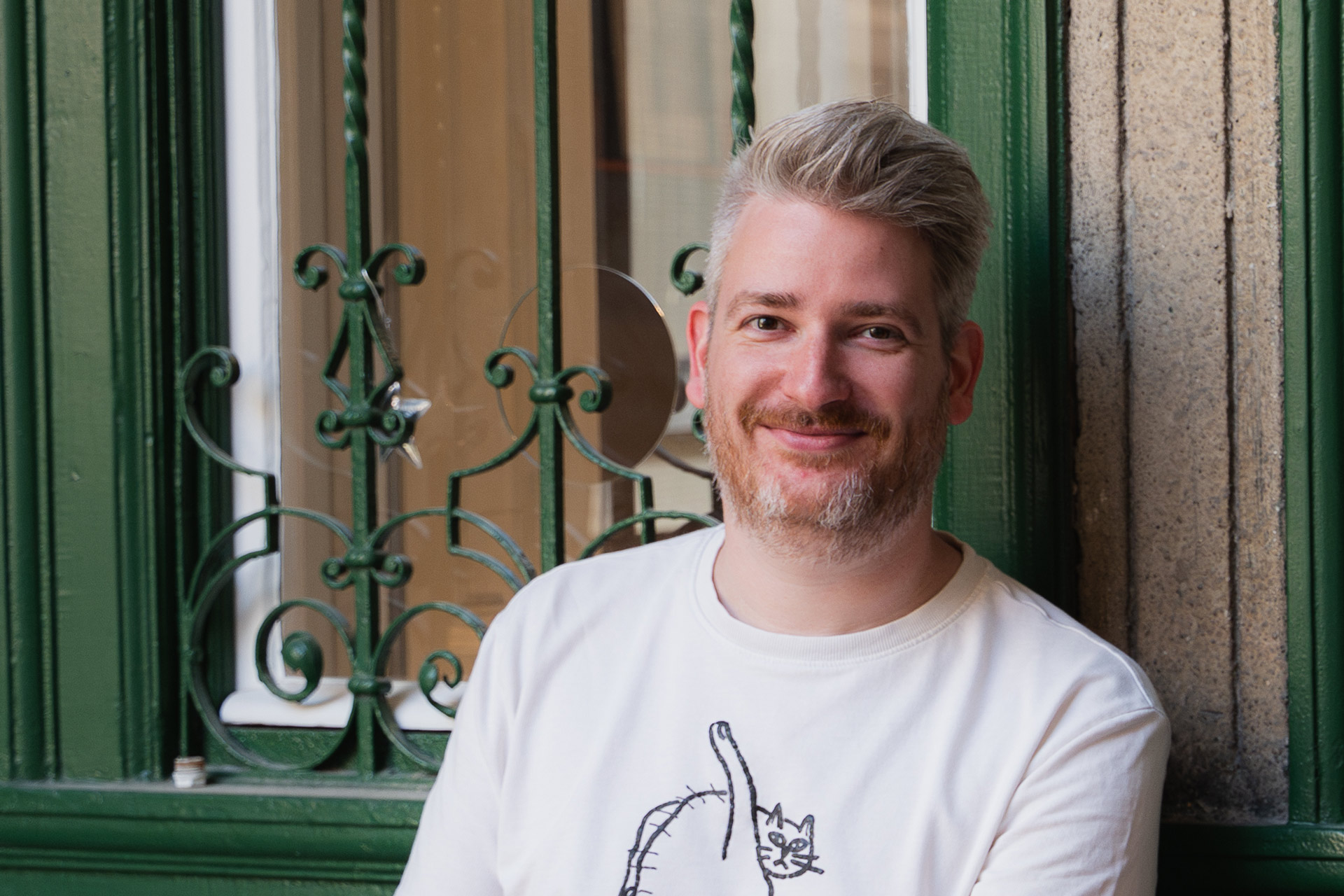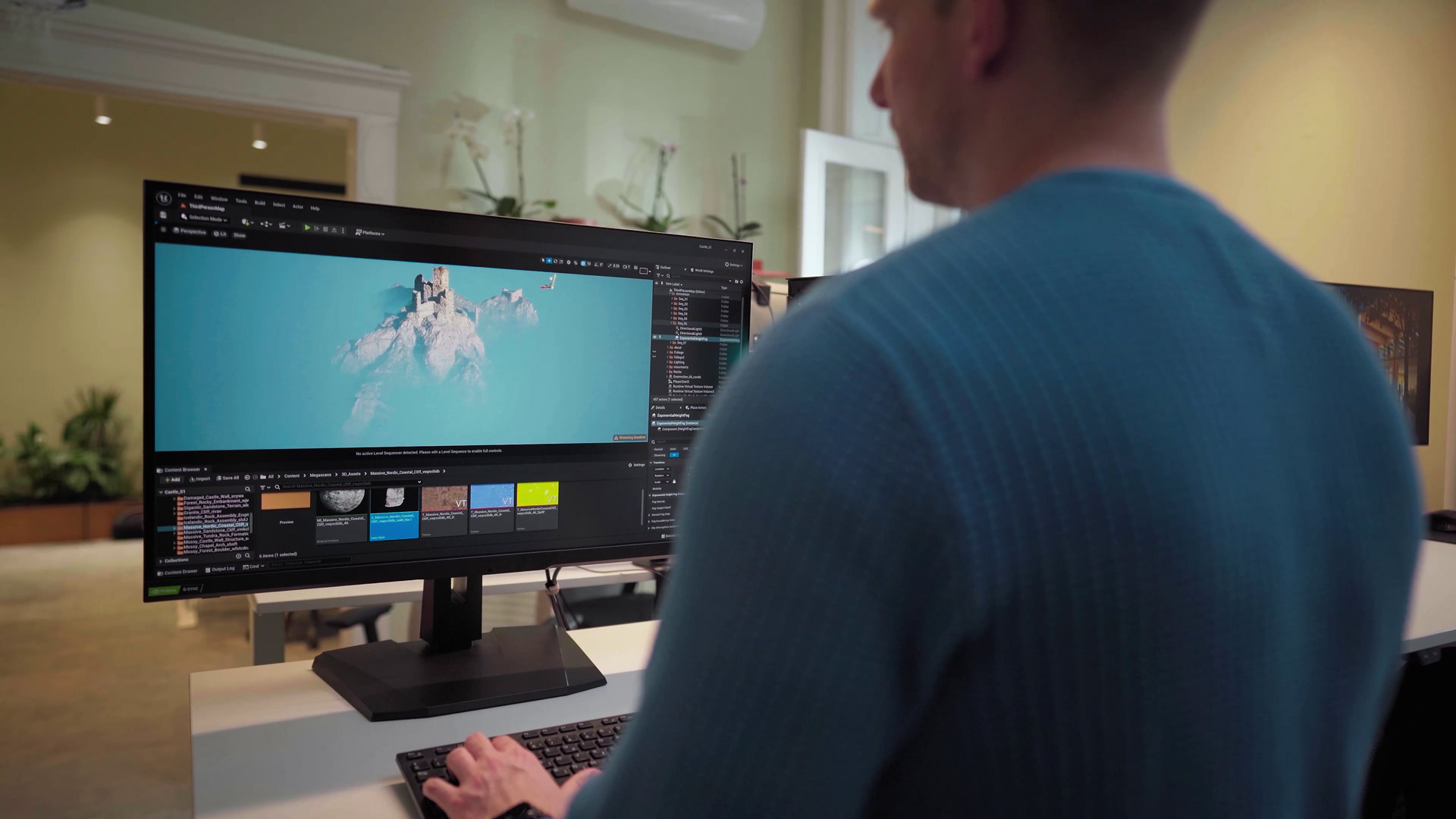As architectural ambitions in the Middle East accelerate at full speed, architectural visualization studios are being pushed to match that momentum, crafting cinematic animations for projects that exist only on paper. Few know this pressure better than Bence Falussy, ZOA Studio’s Head of Art, and Botond Sass, the studio’s Lead CG Artist, who have spent the past years helping shape how the region’s boldest developments are seen and sold. From desert megacities to next-generation airports, their work offers a rare behind-the-scenes look at how design and storytelling intersect in one of the most fast-paced markets in the world.
Key Takeaways:
• MENA projects demand visualizations under extreme time pressure, requiring structured workflows, clear communication, and calm direction. ZOA relies on predefined scene libraries, modular assets, and simultaneous still and animation workflows.
• The Middle East doesn’t just build bigger, visualization must honor its glow and cultural heritage. ZOA’s work must honor MENA’s aesthetic, such us desert light, cultural motifs, luxury tones, while appealing to global investors.
• In fast-paced environments, speed, trust, and clarity matter more than perfection.
Our office is in full swing, we have just two weeks to deliver a full animation for a new airport in the Middle East, only half the time we would normally allocate for a Signature Animation. Our minimum timeline for such a project is six weeks, allowing proper time for creative concept development, multiple revision rounds, and client feedback. But this time, there’s only room for a single sketch round, presenting HD images alongside low-quality renders, and the client has to make their decision and give approval based on that. Such limitations and constraints are not unusual for high-stakes projects coming from the MENA region.
How we adapt to fast-paced projects
With this project, instead of developing a broad creative concept, our team had to shift focus to selecting the exact scenes with the client and working from their own suggestions. Six people worked on the project, putting in heavy overtime. Our team was split, some members handled still images and 3D modeling for the airport, work that was directly reused in the animation, while others worked simultaneously on the storyboard and animation.
This wasn’t just a quick AI-generated teaser or a set of static images; the client wanted a fully realized film to capture the airport’s design, atmosphere, and energy. The clock started ticking the moment the brief landed. Every render, every camera path, every lighting test had to be locked down faster than we’ve ever attempted before.
Money fuels speed. In the MENA region, particularly Dubai, Abu Dhabi, and Saudi Arabia, budgets are often set with the same ambition as the architecture itself. Government-backed developments in Saudi Arabia’s Vision 2030 program, for instance, have committed over $1 trillion USD to large-scale projects like NEOM, The Line, and Red Sea Global, creating unprecedented demand for fast, high-end visualization. With that ambition comes a marketing ecosystem that prizes spectacle. Competition work there isn’t just about technical accuracy; it’s about selling a dream in a single glance. For these visionary projects and flashy concepts, the render must make people see cities where there is only sand, turning a blank site into a believable story of progress.
Why visualization shapes investment decisions
In many MENA projects, architecture is inseparable from the lifestyle it promises. More often than not, the visuals lean toward a consistent image: luxury, openness, and an international aesthetic that blends regional traditions and desert tones with global demand. Cultural details matter, but they’re framed within a shared visual language.
As Bence puts it: “These Saudi and Dubai projects, like NEOM, The Line, and the ambitious 2030 visions, are highly spectacle-driven, and we should acknowledge during the visualization and animation process how that ambition shapes the final outcome.”
In some cases, the future hasn’t just not been built yet, it barely exists as more than a patch of sand or an industrial lot. “We’re visualising a future that doesn’t exist yet,” says Boti. “European vegetation, futuristic architecture, luxury details in a place that might still be desert.” That means creating entire worlds and complete 3D city models from scratch: coastlines where there’s currently dust, urban greenery in climates that have none, skylines that rise from empty land. The aim isn’t deception; it’s projection, showing the client, investors, and the public exactly what could be.
Cultural and technical challenges
Dubai and the wider Middle East operate at scales and speeds rarely seen anywhere else. In MENA, speed isn’t a luxury—it’s the rule. That airport animation was just one example of deadlines pushed to their limit. “Fast projects mean a tight timeline,” Bence admits, “and there’s less time to fix mistakes.” In competitions especially, the risk is high. Design details may still be shifting, windows moving, façades changing, right up until delivery. But in a high-stakes bid, there’s no room to delay; the submission date is immovable.
Even with compressed schedules, ZOA keeps its focus on creative integrity. That means finding ways to meet client requests without sacrificing the studio’s artistic standards. Sometimes that’s about explaining why a change might weaken the image; sometimes it’s about finding a better visual solution to address the client’s underlying concern. As Boti puts it: “It’s about understanding the problem first. If you know why they’re asking, you can solve it in a way that keeps the quality.”
Against the odds, the airport animation was delivered on time. It became part of a winning competition package, one that didn’t just tick the boxes, but elevated the design in a way that resonated with decision-makers in the Middle-East.
In the MENA market, some developer names carry so much weight that once a project is announced, every unit can sell out in a single day. ZOA Studio’s visuals play a role in that. “Hopefully our images helped a lot in selling out,” Bence says, “by communicating an attractive and one-of-a-kind visual package that helped international buyers make their decision to invest in Dubai, Abu Dhabi, or Saudi Arabia.”
Lessons from MENA for global architecture
Working in the Middle-East and North Africa region brings its own rhythm with faster timelines, higher expectations, and often more unpredictable changes along the way. These projects demand agility, artistic precision, and clear communication under pressure. Creative ideas must take shape at speed, and technical execution has to follow without hesitation. Compared to projects in Europe or the Americas, MENA work often pushes both production and artistry to their limits.
Yet it’s exactly these challenges that make the experience so valuable for us. They stretch our capabilities and refine our processes, forcing us to find beauty and clarity under tight constraints. Between 2023 and 2025, ZOA Studio has completed more than 100 major animation and visualization projects for clients across the MENA region, including Emaar, Reportage, Zaha Hadid Architects, UNS, and KCA Architecture. Each project adds a new layer to our expertise, expanding our global portfolio beyond the established markets of Europe, North America, and Asia.
The Middle East’s rapid growth and its appetite for bold, visionary design has become an essential part of our story. It’s not just about delivering impressive architectural visualizations at record speed; it’s about deepening our understanding of a region that is redefining global markets. As Boti puts it: “Every MENA project teaches us something new. The pace, the scale, the expectations, they push us to adapt, to innovate, and to deliver our best work faster than ever before.”
Last updated: October 2025


